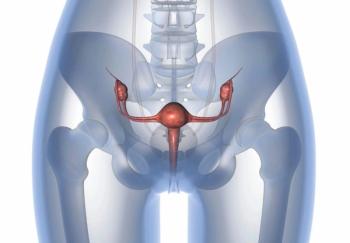
Oncology NEWS International
- Oncology NEWS International Vol 6 No 11
- Volume 6
- Issue 11
‘Treat Low-risk Febrile Neutropenic Patients at Home’
TORONTO-Cancer patients with febrile neutropenia have routinely been hospitalized and treated with intravenous antibiotics. A pilot study presented at the 37th Interscience Conference on Antimicrobial Agents and Chemotherapy (ICAAC) suggests that low-risk patients can be treated just as well at home.
TORONTOCancer patients with febrile neutropenia have routinely been hospitalized and treated with intravenous antibiotics. A pilot study presented at the 37th Interscience Conference on Antimicrobial Agents and Chemotherapy (ICAAC) suggests that low-risk patients can be treated just as well at home.
The major advantages are a significant cost savings, an improvement in the patients quality of life, and a greatly decreased risk of nosocomial infection, said Elias J. Anaissie, MD, chief of the Section of Supportive Care and Oncologic Emergencies, University of Arkansas for Medical Science, Little Rock.
The prospective, randomized trial was conducted at the University Hospital of Keraklion, Crete, Greece, and the surrounding community, and will be followed by a larger multicenter trial in the United States, Dr. Anaissie said.
We conducted this study because we suspected that there would be no difference in outcome with inpatient IV antibiotic treatment or outpatient oral treatment if you select patients who are at low risk for complications. Such patients are relatively easy to identify, Dr. Anaissie said in an interview with Oncology News International.
A previous study from Pakistan had shown no differences with ofloxacin (Floxin) given orally as outpatient therapy or orally to inpatients, but our study was the first to look at the financial implications prospectively, he said.
The trial included 183 adult cancer patients with fever and neutropenia and low risk for other complications who were randomized to receive either inpatient IV treatment with ceftazidime plus amikacin (91 patients) or outpatient oral treatment with ampicillin-sulbactam (Unasyn) plus ciprofloxacin (Cipro) (92 patients).
Patients on the outpatient arm were treated either at home or in a low-care section of the hospital with no staff intervention. Only patients with a low risk of complications (according to preestablished criteria) were enrolled. The primary endpoints were response to therapy and treatment costs.
Dr. Anaissie reported that outpatient oral therapy was as effective as inpatient IV treatment (92% and 91% success rates, respectively). There were no deaths on either treatment arm.
The vast majority of patients who have been treated at home, he said, would select outpatient treatment again rather than hospitalization if given the option. Thus, he said, the justification for outpatient treatment is not purely economic, although that is certainly a concern.
The researchers did find that the outpatient oral regimen was significantly less expensive. Even accounting for costs associated with patients who were switched from the outpatient oral regimen to inpatient IV therapy, treatment in the home or low-care unit was less costly (median, $1,300; range, $37 to $1,667 per episode) than inpatient IV therapy (median, $1,750; range, $790 to $2,500 per episode) (P < .0001).
Even our patients who were re-admitted still showed a substantial advantage favoring outpatient therapy, Dr. Anaissie said. He added that since the study was done in Greece, where hospitalization costs are much lower than here, an even greater differential favoring outpatient treatment would likely be found in the United States.
Although inpatient IV therapy has generally been the standard way of managing even low-risk cancer patients with febrile neutropenia, practice now is being greatly affected by managed care. In California, for example, he said, it is very difficult to convince a managed care company to approve inpatient IV therapy for a low-risk patient.
Thus, the planned US randomized multicenter trial will be done in the Midwestern states, which have less managed care penetration than the coasts. Patients will be randomized to receive the same antibiotic treatment as inpatients or outpatients.
Not for Everyone
Dr. Anaissie warned that outpatient treatment is not appropriate for all febrile neutropenic cancer patients, and that negative risk factors may include socioeconomic and psychological considerations as well as disease state.
Medical factors that identify patients who definitely should not be on outpatient therapy include acute leukemia, expected duration of neutropenia greater than 7 days, and other problems that require hospitalization such as hyper-calcemia or diarrhea and dehydration.
In addition, he said, patients should be excluded from outpatient treatment if they lack the mental capacity to understand what the drug is or how to get it, or are unlikely to return for follow-up or call you back, Dr. Anaissie said.
Patients should be hospitalized for treatment if they could not get to the hospital if they became sick. This might be the person who does not have a companion, or does not have a phone to call you, or has no means of getting to the emergency room if needed, he said. This might also include the patient who has come to a referral medical center from another city for treatment. If a patient comes in from far away and is alone, Dr. Anaissie said, I would hesitate to treat that person as an outpatient.
The effects on the patients family must also be considered, he said. Often by the time the patient is referred for treatment, the family is exhausted from caring for the patient. Outpatient regimens are a stepped up kind of care, requiring additional tasks such as changing the medication every 8 hours or getting the patient to the emergency room every day for follow-up. This is sometimes just more than the family can cope with at that time, and these patients should then be a social admission, Dr. Anaissie said.
Articles in this issue
about 28 years ago
New Strategies Forecast for Pancreatic Cancer Treatmentabout 28 years ago
Tumor Cells in Marrow Predict Cancer Outcomeabout 28 years ago
Zeneca Sponsors Rural Breast Cancer Outreachabout 28 years ago
Private Sector Purchasers Need Cancer Care Data to Determine Qualityabout 28 years ago
Payers May Ignore Aspects of Care Most Important to Patientsabout 28 years ago
BCG May Be Superior to Chemotherapy in Bladder Cancerabout 28 years ago
Adjuvant Vaccine Therapy Prolongs Survival in Colon Cancerabout 28 years ago
‘Don’t Wait Too Late to Make End-of-Life Decisions’about 28 years ago
Dose-Dense Adjuvant Chemo for Node+ Breast CancerNewsletter
Stay up to date on recent advances in the multidisciplinary approach to cancer.



















































































